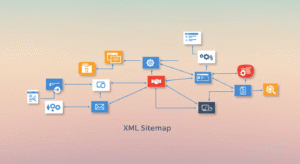What is the Spam Score?
In simpler terms, the meaning of spam score is how likely your website looks “spammy” to search engines based on its characteristics. A high score doesn’t always mean you’re in trouble, but it does suggest that your site shares features with sites that have been flagged or penalized by search engines in the past.
This metric is especially useful for evaluating external backlinks, checking link-building strategies, and auditing competitor sites. It’s also valuable during digital PR or guest posting campaigns to avoid toxic partnerships.
How is Spam Score Calculated?
The Spam Score (SS) is calculated using 27 risk signals identified by Moz. These signals examine different elements of your website or backlink profile, such as:
- Domain age and extension
- Ratio of follow to no-follow links
- Use of exact-match anchor text
- Thin or duplicate content
- Low domain authority
Moz then compares your website to a database of domains that have previously been penalized. The more red flags your site shares with those domains, the higher your spam score will be.
Categories of Spam Score
Spam Score (SS) is typically divided into three risk levels:
| Spam Score Range | Risk Level | Interpretation |
| 1% – 30% | Low Risk | Generally safe, but still worth monitoring |
| 31% – 60% | Medium Risk | Needs attention; investigate potential issues |
| 61% – 100% | High Risk | High chance of being penalized; take immediate action |
Factors Affecting Spam Score
1. Low-Quality Backlinks
Backlinks from irrelevant, spammy, or penalized domains can significantly increase your spam score. Google sees these as manipulative and may penalize your site accordingly.
2. Over-Optimized Anchor Text
Using exact-match keywords excessively in your anchor text can trigger spam signals. A natural backlink profile includes branded and generic anchors too.
3. Thin or Duplicate Content
Pages with little original content or those that duplicate content from other sites are often flagged as low-value, increasing your SS.
4. Suspicious Domain Patterns
Domains with excessive hyphens, numbers, or unnatural naming conventions are more likely to be associated with spammy behavior.
5. Lack of Contact Information
Websites without clear contact details or an About page may appear untrustworthy to both users and search engines.
How to Find Spam Score
You can easily find the spam score using several tools. The most popular and reliable is the Moz Spam Score checker free tool available through Moz’s Link Explorer.
Other options include:
| Tool Name | Features | Cost |
| Elite SEO Tools | Shows SS, linking domains, and risk level | Free |
| Moz Spam Score Checker Free | Offers toxic score and backlink analysis | Paid |
| Ahrefs Site Explorer | Provides backlink profile and domain rating | Paid |
Does Google Consider Spam Score?
While Google doesn’t officially use Moz’s Spam Score in its algorithm, the factors that influence SS, like low-quality backlinks and thin content, are very much part of Google’s ranking considerations. So yes, indirectly, Google does consider spam score by evaluating the same signals.
Why Does Spam Score Matter in SEO?
You may be wondering, “Does Google consider spam score?” Technically, Google doesn’t use Moz’s spam score directly, but the red flags it highlights mirror Google’s own quality guidelines.
So, while spam score is not a ranking factor, it still matters because:
- It helps identify risky backlinks that could lead to penalties
- It flags potential violations of search engine guidelines
- It improves the credibility and authority of your domain
- It protects your site during link audits, especially when disavowing bad links
Ignoring it could make your site vulnerable to algorithm updates like Google’s Penguin or manual actions.
How Do I Reduce Spam Score?
So, you’ve found your spam score is higher. Here’s a step-by-step breakdown of how to reduce the spam score of a website:
1. Use a Spam Score Checker Free
Tools like Moz Spam Score Checker Free and other Spam Score Checker Free tools allow you to evaluate your domain or page without cost.
2. Audit Backlinks
Find and remove low-quality backlinks using tools like Ahrefs, Moz, or SEMrush. Disavow toxic domains that link to you unnaturally.
3. Improve Content Quality
Avoid duplicate or thin content. Focus on EEAT (Expertise, Experience, Authority, Trustworthiness) by providing original, helpful information.
4. Fix Over-Optimization
Too many exact-match anchor texts or keyword stuffing can increase your spam score. Balance your internal linking and avoid unnatural practices.
5. Strengthen On-Page SEO
Use structured data, fix broken links, and ensure your site’s technical SEO is solid. Avoid doorway pages or misleading redirects.
6. Monitor Regularly
SEO isn’t a one-time task. Regularly check your spam score and find spam score issues before they become dangerous. Tools like Moz Spam Score Checker free are great for this.
Final Thoughts
Understanding what is the spam score in SEO is more than just knowing a number. It’s about recognizing the health of your website and taking proactive steps to maintain its integrity. A high spam score doesn’t mean doom; it means it’s time to clean house.
A spam score is not just a number; it’s a reflection of your site’s trustworthiness. Keep it low, review it often, and treat it as an early warning system for smarter SEO decisions.




